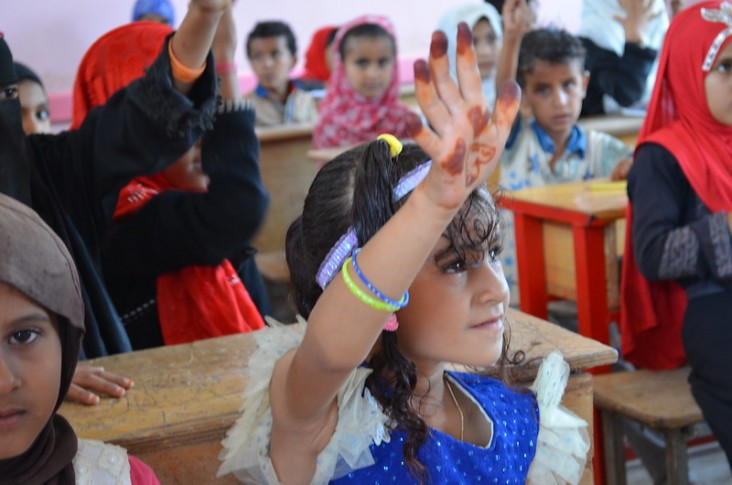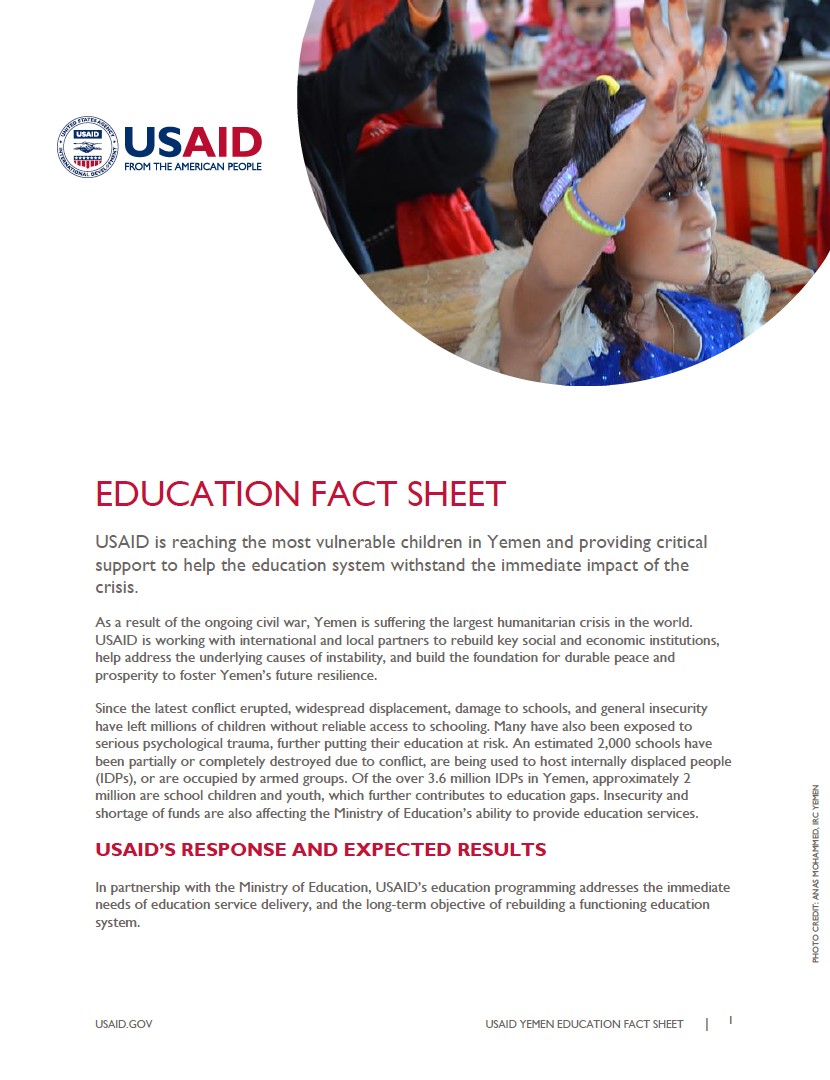Speeches Shim

USAID is helping reach the most vulnerable children in Yemen and providing critical support to help the education system withstand the immediate impact of the crisis.
As a result of the ongoing civil war, Yemen is suffering the largest humanitarian crisis in the world. USAID is working with international and local partners to rebuild key social and economic institutions, help address the underlying causes of instability, and build the foundation for durable peace and prosperity to foster Yemen’s future resilience.
Since the latest conflict erupted, widespread displacement, damage to schools, and general insecurity have left millions of children without reliable access to schooling. Many have also been exposed to serious psychological trauma, further putting their education at risk. An estimated 2,000 schools have been partially or completely destroyed due to conflict, are being used to host internally displaced people (IDPs), or are occupied by armed groups. Of the over 3.6 million IDPs in Yemen, approximately 2 million are school children and youth, which further contributes to education gaps. Insecurity and shortage of funds are also affecting the Ministry of Education’s ability to provide education services.
USAID Yemen Education Fact Sheet ![]() (pdf - 165k)
(pdf - 165k)
USAID'S RESPONSE AND EXPECTED RESULTS
In partnership with the Ministry of Education, USAID’s education programming addresses the immediate needs of education service delivery, and the long-term objective of rebuilding a functioning education system.
USAID’s flagship Gateway to Education activity supports a strengthened, resilient education system to provide quality formal education for Yemeni children. The activity will reach 450,000 children through four key areas that are aligned with Yemen’s Transition Education Plan: safe and equitable access to education; improved teaching and learning; improved facilities and supplies; and strengthened institutional capacities.
USAID restores access and facilitates re-entry to basic education through the Yemen Basic Education/Emergency Crisis Response Project. Interventions include: a back-to-school campaign that equips students with school bags and basic learning supplies to help increase enrollment; minor repairs to ensure an environment conducive to learning; a pilot self-learning program for children in high-risk areas who cannot access schools to continue their education; psychosocial support to help children overcome trauma by developing positive coping mechanisms; and the development and implementation of safety and emergency plans to help schools protect students and remain safe spaces for children. This activity has reached more than 1.25 million children as of August 2019.
Through the School Doors program, two activities – Improving Access to Quality Education in Yemen and Education in Emergency: A Bridge to Development and Resilience – support identification and enrollment of out-of-school children and youth into accelerated learning and remedial learning spaces, or non-formal education. The activity will reach 50,000 out-of-school children and youth, providing them with learning opportunities to return them to mainstream systems.
The Food Assistance to Support School Education activity will reach 450,000 students with a nutritious snack as an incentive for regular attendance and to address short-term hunger. To the extent possible, commodities are locally produced to stimulate the local economy.


Comment
Make a general inquiry or suggest an improvement.